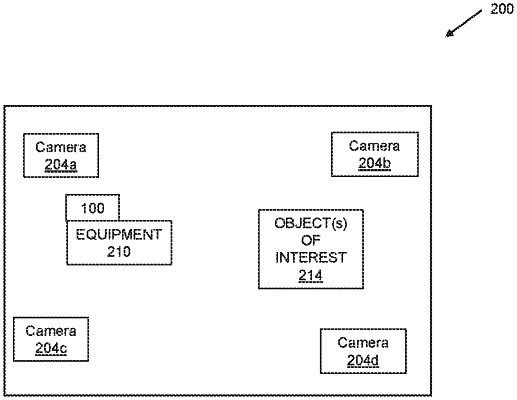| CPC B25J 9/1676 (2013.01) [A61B 6/102 (2013.01); B25J 13/08 (2013.01); G05D 1/0253 (2013.01); G06T 7/215 (2017.01); G06V 10/768 (2022.01); G06V 20/64 (2022.01)] | 18 Claims |

|
1. An apparatus for automated collision avoidance in a medical environment, the apparatus comprising a processor configured to:
detect, in the medical environment, a potential obstacle to a medical device based on image data of the medical environment captured by a sensor;
predict a three-dimensional (3D) representation of the potential obstacle in the medical environment at a future point in time, wherein the 3D representation comprises a 3D point cloud, a 3D mesh or a voxel, and wherein the processor is further configured to determine motion information of the potential obstacle based on a first image of the medical environment and a second image of the medical environment captured by the sensor, the processor further configured to predict the 3D representation of the potential obstacle at the future point in time based at least on the determined motion information;
predict a 3D representation of the medical device at the future point in time;
project the predicted 3D representation of the potential obstacle and the predicted 3D representation of the medical device onto at least one two-dimensional (2D) projection plane;
determine a possibility of a collision between the potential obstacle and the medical device based on the projection; and
execute a collision avoidance action based on the determined possibility of the collision.
|